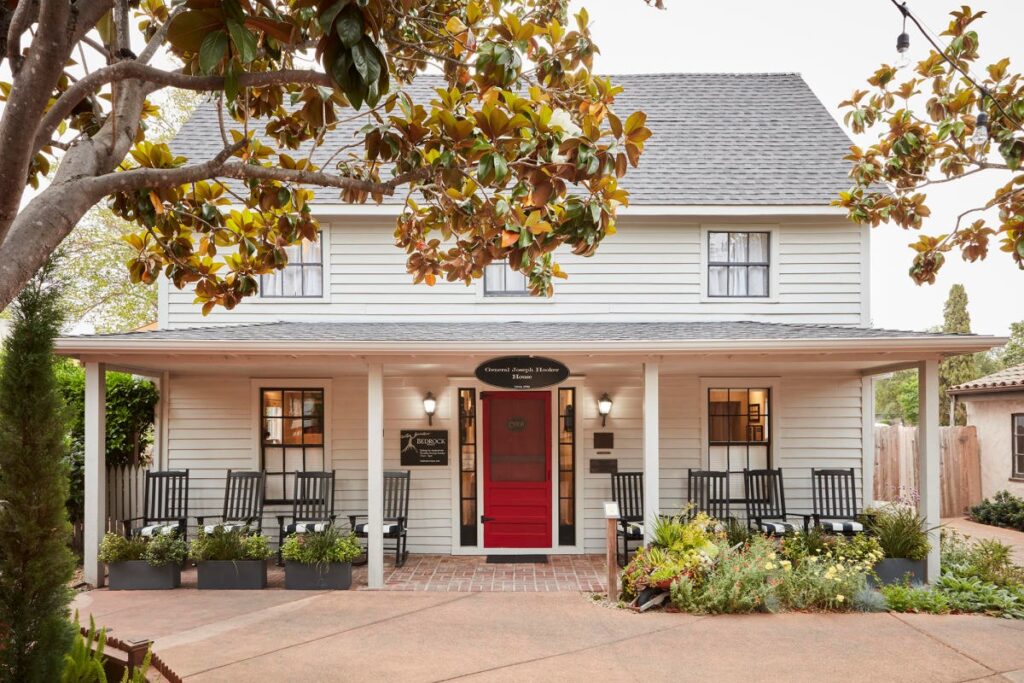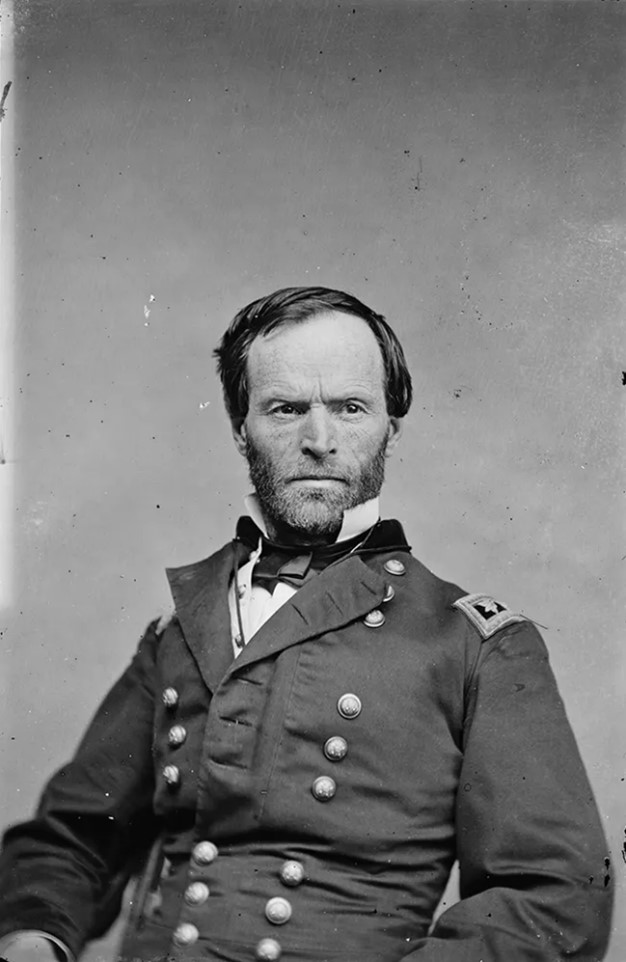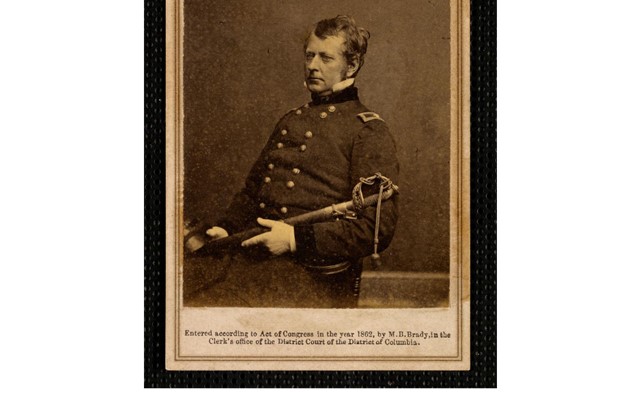Table of Contents

By far the most famous connection between the California Wine Country and the Civil War is the Bedrock Vineyard in Sonoma Valley- now farmed by Bedrock Wine Co. and comprising 152 acres. The vineyard was founded in 1854 by Generals William Tecumseh Sherman and Joseph Hooker.[1] The land originally belonged to General Mariano Guadalupe Vallejo who sold it off just before the Bear Flag Revolt in 1846.[2] It went through several owners before being acquired by Hooker with the financial help of Sherman. During this time, Hooker also erected a ¨knockdown¨ pre-cut house shipped from Sweden.[3] The house still stands and was moved from its original First Street West location to its current location right off Sonoma Plaza.[4] The building now operates as a tasting room for the Bedrock Wine Co.[5]

Joseph Hooker had just begun to start planting the first Vitis vinifera grapevines on his Sonoma property when the Civil War began. Due to previous issues with superiors, (most notably General Winfield Scott), Hooker´s participation in the Civil War was not initially sought.[6] Scott´s dislike of Hooker was a result of Hooker´s testifying against him in a court-martial proceeding during the Mexican War. Scott’s grudge against him may have been the reason why Hooker was denied reinstatement into the U.S. Army a decade later.[7] Although his request for reinstatement to the army was denied, Hooker did manage to be commissioned as a colonel in the California militia the next year.[8] Despite living a relatively quiet pastoral existence on the West Coast, Hooker was allegedly unhappy and turned to drinking and gambling.[9] Unlike General Erasmus D. Keyes who had been recalled by Scott from the West Coast to serve in the oncoming war, Hooker had to aggressively pursue and chase down a commission in order to be included.[10] In fact, even after selling off his vineyard and moving East, his initial request for a commission was denied.[11] It wasn´t until the Union defeat at the First Battle of Bull Run that Hooker was able to successfully petition President Lincoln for reinstatement in the Union army.

Although he participated in many famous battles, Hooker is known best for commanding the Army of the Potomac during the Battle of Chancellorsville. Despite an initial advantage, the Army of the Potomac was defeated, and Hooker sustained a head injury when a cannon shell exploded at his headquarters.[12] Shortly after, Hooker resigned and command was given to General George Meade. Hooker was subsequently reassigned along with two corps to the Army of the Cumberland. There, Hooker, and his troops performed admirably in the Battle of Lookout Mountain and the Battle of Chattanooga. By the Battle of Atlanta on July 22, 1854, Hooker was leading the 20th Corps of the Army of the Tennessee. General James B. McPherson who commanded the army was unfortunately killed during the battle. Due to his seniority, Hooker assumed he would be appointed the commanding position and was appalled when Sherman gave the role to Major General Oliver Howard instead. Hooker asked to be relieved and was subsequently transferred to Cincinnati, Ohio where he was given the non-combat command of the Northern Department which he retained until the end of the war.[13] He retired from the army in October 1868 after suffering from a stroke, and spent his remaining years near New York City, New York. He never returned to California.
In 1973 Hooker’s house was given to the Sonoma League for Historic Preservation. It wasn’t until 2009 that the property’s name was restored to the General Joseph Hooker House. In 2017, Bedrock Wine Co. began renting out the house as a tasting room, effectively connecting a house and vineyard that had been separated for over a century-and-a-half. Tastings at the house are appointment-only and sample wine is made from a selection of vineyards farmed by Bedrock Wine Co. across Northern California. Among these vineyards is Hooker’s original Bedrock Vineyard. Although the original vines were destroyed due to the root louse (phylloxera) invasion in the mid-1880’s, the vines were replanted by mining magnate Senator George Hearst in 1888.[14] The company’s Bedrock Heritage wine is crafted from Hearst’s vines. Although Hooker never returned to Sonoma, his vineyard and house continue on as historically rich and functional sites. They are best remembered for their close connection to two of the most famous figures in Civil War history.
About the Author
Elizabeth Eisenstark first joined the Museum as a volunteer and is now on staff as Research and Collections Assistant. Elizabeth is a native Californian and graduated from the University of California Santa Cruz with a degree in History of Art and Visual Culture. She has previously worked in the Due Diligence industry—doing detailed background checks on companies and employees. Elizabeth enjoys sewing, rescuing rabbits, and spending time with her four tarantulas. The Museum caught her interest from a researcher’s standpoint, and she enjoys working with the staff and learning something new every day.
Sources
[1] www.offsetpartners.com, Offset -. “Our Vineyards.” Our Vineyards – Bedrock Wine Co., bedrockwineco.com/it-takes-a-village/vineyards/. Accessed 29 Dec. 2023.
[2] “Bedrock Vineyard.” Vineyard 360, www.vineyard360.com/bedrock-vineyard.html. Accessed 29 Dec. 2023.
[3] www.offsetpartners.com, Offset -. “General Joseph Hooker House.” Tastings – Bedrock Wine Co., bedrockwineco.com/general-joseph-hooker-house/. Accessed 29 Dec. 2023.
[4] Ibid.
[5] Ibid.
[6] “Joseph Hooker.” Ohio Civil War, 7 Jan. 2023, www.ohiocivilwarcentral.com/joseph-hooker/.
[7] Ibid.
[8] Ibid.
[9] “The Civil War: Joseph Hooker Biography.” PBS, Public Broadcasting Service, www.pbs.org/kenburns/the-civil-war/joseph-hooker. Accessed 29 Dec. 2023.
[10] Ibid.
[11] Ibid.
[12] “Joseph Hooker.” Ohio Civil War, 7 Jan. 2023, www.ohiocivilwarcentral.com/joseph-hooker/.
[13] Ibid.
[14] www.offsetpartners.com, Offset -. “Our Vineyards.” Our Vineyards – Bedrock Wine Co., bedrockwineco.com/it-takes-a-village/vineyards/. Accessed 29 Dec. 2023.


